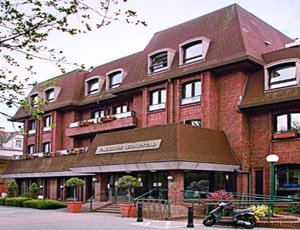Treatment cost

Apart from in-detail treatment procedures available, Parkside Private Hospital located in London, United Kingdom has a wide variety of facilities available for International Patients. Some of the facilities which are provided by them are Accommodation, Airport Transfer, Choice of Meals, Interpreter, SIM, TV inside room. Also listed below are some of the most prominent infrastructural details:

Gamma Knife surgery is a type of noninvasive procedure used to shrink or kill the tumor with the help of ionizing radiation. Unlike conventional surgery, Gamma Knife surgery does not include the use of scissors or surgical blades and knives to make an incision to access the tumor.
Gamma Knife is actually the name of the technique and the equipment that is used to deliver precise radiation to the tumor site. It allows for precise targeting of the tumor without affecting the nearby healthy cells and tissues.
It is a type of stereotactic radiosurgery (SRS) and similar to other techniques such as CyberKnife and X-Knife. Each type of SRS has its own benefits and limitations and therefore, the treatment is applied after careful selection of the candidates for each of these techniques available.
Gamma Knife radiosurgery uses specialized computerized treatment planning software that helps physicians locate the small target areas inside the head. These target areas are then irradiated with extremely high precision without damaging the nearby tissues.
This type of radiosurgery is now used for the treatment of a number of conditions, including primary or metastatic brain cancers, benign brain tumors (meningioma, acoustic neuroma, and pituitary adenomas), vessel malformations such as arteriovenous malformations, and functional disorders such as trigeminal malformations.
Gamma Knife radiation is used to treat brain lesions and inoperable tumors in the brains by targeting them with enough radiation. After the procedure, the targeted lesion is expected to shrink, disintegrate completely, or stop growing any further.
This type of radiosurgery is now used for the treatment of a number of conditions, including primary or metastatic brain cancers, benign brain tumors (meningioma, acoustic neuroma, and pituitary adenomas), vessel malformations such as arteriovenous malformations, and functional disorders such as trigeminal malformations.
Gamma Knife radiosurgery uses multiple beams of radiation to converge in three dimensions to focus on a small area of tumor or lesion precisely. This permits a large volume of high-dose radiation to be delivered with accuracy.
The Gamma Knife machine commonly being used worldwide uses robotic technology for submillimeter patient movement during the procedure to ensure that the complete targeted location is irradiated.
The following are the major steps that are executed during the procedure:
Depending on the requirement and treatment planning, a patient may need 1 to 5 sessions or sittings of Gamma Knife radiation to treat the lesion.
Gamma Knife radiosurgery is a painless procedure. Most of the patients nap during the procedure and so not feel anything.
The head may hurt for 10 minutes as the pins of the head frame are attached. But the pain subsides and there is not much sensation left because of the local anesthetic which is given.
The results and effects of the Gamma Knife radiation may start appearing anywhere from a day to a couple of weeks. The results of radiosurgery are visible on CT/MRI after a few weeks to a few months. However, there can be relief in pain in conditions such as trigeminal neuralgia almost immediately.
Ask your healthcare adviser for the best multiple options and choose the one that meets your expectations
Gamma Knife Radiosurgery cost in London varies from one hospital to the other. The cost quoted by some of the best hospitals for Gamma Knife Radiosurgery in London generally covers the pre-surgery investigations of the patient. The treatment cost usually includes the expenses related to hospitalization, surgery, nursing, medicines, and anesthesia. Post-surgical complications, new findings and delayed recovery may have an impact on the total Gamma Knife Radiosurgery cost in London.
There are many hospitals that perform Gamma Knife Radiosurgery in London. The top hospitals for Gamma Knife Radiosurgery in London include the following:
The recovery of the patient many vary, depending on several factors. However, on an average, patient is supposed to stay for about 14 days in the country after discharge. During this time, the patient undergoes medical tests and consultations. this is to ensure that the treatment was successful and the patient us safe to return.
Apart from the cost of Gamma Knife Radiosurgery, the patient is also required to pay additionally for daily meals and guest house accommodation. These are the charges for daily meals and accommodation outside the hospital. The per day cost in this case may range from 55 USD.
The patient is supposed to stay at the hospital for about 1 Days after Gamma Knife Radiosurgery surgery for monitoring and care. This phase is important to ensure that the patient is recovering well and is clinically stable. During this time, several tests are performed before the patient is deemed suitable for discharge.
There are about 1 Hospitals in London that offer Gamma Knife Radiosurgery to international patients. These hospitals have proper infrastructure for the treatment of patients who require Gamma Knife Radiosurgery. These hospitals comply with all the rules and regulations as dictated by the regulatory bodies and medical association in London
Some of the most sought after doctors for Gamma Knife Radiosurgery in London are: